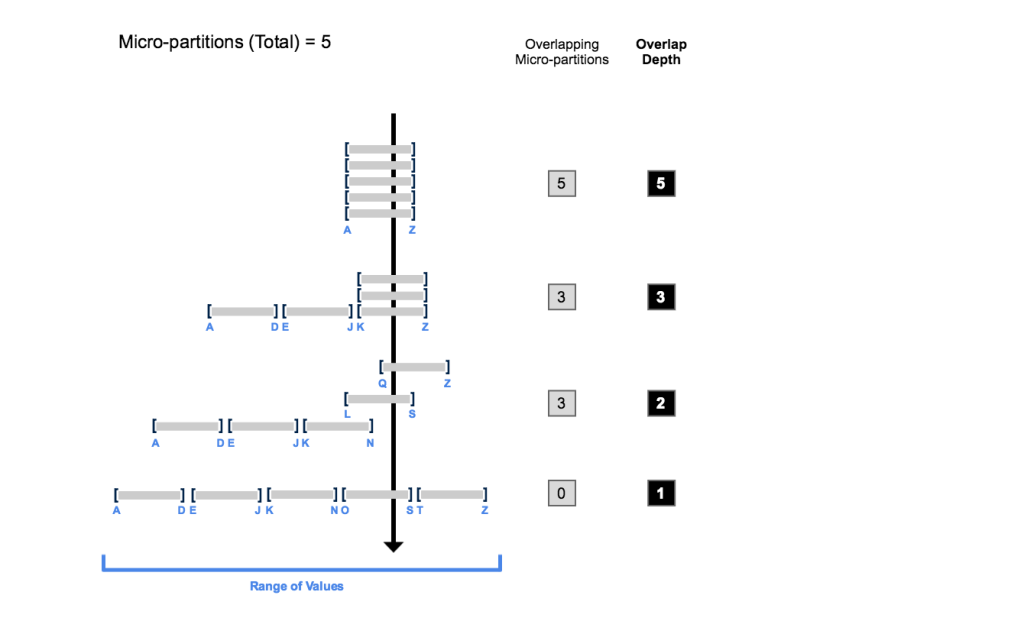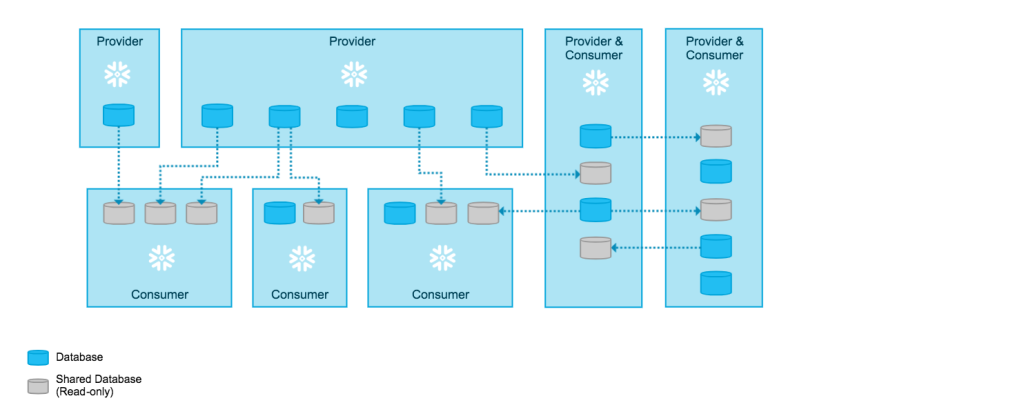The Snowflake platform, thanks to its unique cloud-based architecture, brings a revolution in Big Data management and analysis. By separating compute space from data storage, it allows users to scale both components independently. This flexibility not only increases the efficiency of data operations through faster processing and better availability of resources, but also allows for more effective cost control by adapting resources to current needs. This makes it easier to manage large data sets, enabling companies to quickly adapt to changing market and technological requirements.
At the outset of this article, we delve into the foundational aspects of data analytics, specifically focusing on Snowflake, to establish a solid understanding of the landscape. Addressing questions like “What is Data Analytics and Data Analysis in Snowflake?”, “What are Snowflake Data Analytical Tools?”, and “How Does Snowflake Data Cloud Work?” provides readers with the essential knowledge needed to comprehend the more complex functionalities and benefits of the Snowflake Data Cloud. This structured approach ensures that readers are well-equipped to appreciate the sophisticated capabilities and advantages that Snowflake offers in the realm of data analytics.
1. What is data analytics and data analysis in Snowflake?
Data analytics is the science of analyzing raw data to make conclusions about that information. Snowflake data analytics takes this a step further by providing a cloud-based platform that enhances data analysis processes. With Snowflake, data analysts can perform robust data analysis, leveraging its scalable compute and storage capabilities. This enables businesses to efficiently conduct snowflake data analysis, utilizing snowflake analytics data to derive actionable insights. The platform’s architecture uniquely separates compute and storage, ensuring that snowflake analytics remain swift and cost-effective. As a big data analysis tool, Snowflake enables both real-time and predictive analytics, making it an invaluable asset for organizations looking to harness the power of data analytics in Snowflake.
2. What are Snowflake data analytical tools?
Snowflake data analytical tools are a suite of features and services that facilitate effective data analysis within the Snowflake environment. These tools include various snowflake analytics functions like data sharing, data cloning, and seamless scalability, which are essential for cloud analytics in Snowflake. Snowflake analytics tools offer a wide range of capabilities, from snowflake security analytics to advanced snowflake predictive analytics, catering to diverse business needs. By utilizing these snowflake analytics tools, businesses can enhance their analytical processes, ensuring a more informed decision-making and strategy formulation. The tools are designed to be intuitive and provide a collaborative platform for snowflake data analysts, promoting efficiency and innovation in data analytic strategies.
3. How does Snowflake Data Cloud work?
The Snowflake Data Cloud is a comprehensive solution designed to break down silos and unify data, enabling a broad spectrum of data analytics snowflake processes. It operates as a fully-managed service, leveraging the advantages of cloud infrastructure for enhanced scalability, performance, and security. How it works is by offering a centralized repository for all types of data, which can be accessed and analyzed by authorized users across the organization. Snowflake for data analytics ensures that users can leverage the full potential of their data, regardless of the scale or complexity. The platform incorporates snowflake cybersecurity measures, safeguarding data throughout its lifecycle. Additionally, the Snowflake Data Cloud supports a wide array of data analytic technologies, including machine learning and AI, empowering businesses with the tools needed for advanced analytics for Snowflake. With its powerful capabilities and ease of use, the Snowflake Data Cloud is reshaping how organizations approach data analysis and business intelligence.
4. Data storage optimization
In Snowflake, data compression plays a key role in optimizing storage. Thanks to advanced algorithms, data is compressed in such a way that it takes up much less space, while maintaining quick access to information. Micro-partitioning is another advanced feature where data is automatically divided into small, manageable parts, significantly speeding up processes including querying and analysis. These two technologies not only reduce storage costs, but also increase the efficiency of data operations.
Here is an example diagram illustrating micro-partitioning:

The diagram above shows an example of a table consisting of five micro partitions with values from A to Z. It shows how overlap affects the depth of grouping.
5. Data security and privacy
Snowflake provides a high level of security for data both at rest and in transmission. Encryption at rest means that all data stored on the platform is automatically protected against unauthorized access. In-transit encryption protects data sent between the client and Snowflake, ensuring it is secure while in transit over the network. Additionally, Snowflake offers fine-grained access control, allowing for detailed management of data permissions, which allows companies to precisely control who has access to what data and to what extent.

6. Data sharing in Snowflake
Snowflake allows you to easily share data between different entities, without having to physically transfer or copy it. With Secure Data Sharing, organizations can share one data set live with other Snowflake users while maintaining full control and security. This opens up new opportunities for companies to collaborate and share insights, while maintaining data integrity and privacy.

With this architecture, Snowflake enables a network of providers that can share data with multiple consumers (including within their own organization) and consumers who can access shared data from multiple providers.
7. Integration with ETL and BI tools
Snowflake natively integrates with many ETL and BI tools, enabling easy processing (Extract, Transform, Load) and data analysis (Business Intelligence). This platform works with popular tools such as Power BI for BI analyses, Informatica, Talend or Matillion for ETL, and Tableau or Looker. Additionally, companies can leverage Snowflake’s open API to create their own, tailored solutions. Integration with these tools allows for seamless workflows, process automation, and deeper, more detailed data analyses.
8. Summary
The use of Snowflake in Big Data analyzes opens new opportunities for organizations in every sector. To fully reap the benefits of this powerful platform, companies must focus on making the most of its unique features, such as flexibility to scale, advanced data management and optimization, strong security, and ease of integration with other tools. Regularly reviewing and adapting your strategy, especially in light of continued innovation in Snowflake technology, is key to staying competitive and maximizing the value you get from your data. Snowflake isn’t just a data management tool; is a platform that can transform the way companies perceive and use their greatest asset – data.
As we conclude our exploration of Snowflake’s capabilities, it’s essential to highlight how TTMS – our IT outsourcing company – can assist your business in harnessing this powerful tool to transform data into valuable business insights. With our experience in creating ELT/ETL infrastructures for the Snowflake data warehouse, we ensure a customized solution that delivers reliable, up-to-date data you can trust. Our team of engineers will help design an optimal architecture and permission structure, enabling your business to not only enhance security and reduce costs but also fully leverage the potential of Snowflake and PowerBI for your analytical needs.
Elevate your analytics game with TTMS – making it simple and efficient! Learn more about our services and begin your business transformation today. Discover the possibilities of Snowflake with TTMS!
FAQ
What are ETL and BI Tools?
ETL (Extract, Transform, Load) tools are used to extract data from various sources, transform it (cleaning, aggregating, converting), and load it into a target system like a data warehouse. BI (Business Intelligence) tools are used for data analysis, visualization, and reporting to support business decision-making. Together, they form a suite of tools that support the processing, analysis, and presentation of data in an organization.
What is the Snowflake platform?
Snowflake is a cloud-based data platform offering solutions for storing, analyzing, and processing large data sets. It is characterized by its unique architecture that separates the compute layer from the storage layer, enabling flexible and independent scaling of both components. Snowflake supports various data formats, integrates with ETL and BI tools, and provides advanced data security and management features.
What is Micro-Partitioning?
Micro-partitioning is a feature offered by the Snowflake platform that involves automatically dividing data into small, manageable segments, known as micro-partitions. This significantly speeds up data operations, such as queries and analyses. Micro-partitioning also allows for better data organization and performance optimization, while increasing system flexibility and scalability.
Are data in Snowflake secure?
Yes, Snowflake provides a high level of data security, employing data encryption at rest and in transit, as well as offering various key management options. Additionally, the platform allows for configuring fine-grained access control to data, enabling detailed management of user access and permissions. Regular security audits, certifications, and compliance with industry regulations further strengthen data protection in Snowflake.
What is fine-grained access control?
Fine-grained access control is a security mechanism that allows for very detailed management of access to data and resources. It enables administrators to define permissions at the level of individual records, columns, or even rows of data. This allows organizations to precisely control who has access to what information, providing a higher level of security and compliance with data protection regulations.
What is Secure Data Sharing?
Secure Data Sharing is a feature offered by Snowflake that allows for safe sharing of data between different entities without the need for physical data transfer or copying. This feature enables organizations to create shared data views that are live and accessible to authorized users, while maintaining complete control and security over the data. It facilitates collaboration and data exchange while eliminating many risks associated with data transmission.
Does Snowflake support big data?
Yes, Snowflake supports big data by offering a cloud-based platform with unlimited scalability and storage, making it ideal for handling large volumes of structured and semi-structured data. It’s designed to perform fast data processing and complex analytical queries on large datasets efficiently.
What are the best practices for Snowflake data modeling?
Best practices for Snowflake data modeling include using a scalable and flexible schema, optimizing data structures for performance, employing variant data types for semi-structured data, and taking advantage of Snowflake’s unique features like cloning and zero-copy cloning. It’s also recommended to continuously monitor and adapt models as business needs evolve.
What are the key benefits of the data cloud in Snowflake?
The key benefits of the data cloud in Snowflake include massive scalability, a single source of truth for all data types, near-unlimited concurrency, seamless data sharing, robust security features, and support for diverse data workloads from data warehousing to data lakes and beyond.
How can Snowflake complement cloud data storage?
Snowflake complements cloud data storage by providing a layer of data management, processing, and analytic capabilities on top of the stored data. It enhances cloud storage with features like automatic scaling, data sharing, and a wide range of data analytics tools, making it more than just a storage solution but a comprehensive data platform.
What is Snowflake in data analytics?
In data analytics, Snowflake is a cloud-based data platform known for its flexibility, performance, and ease of use. It allows businesses to store, process, and analyze vast amounts of data with speed and efficiency, offering features like real-time analytics, secure data sharing, and a wide array of integrations with other analytic tools.
Is Snowflake a data warehouse or ETL?
Snowflake is primarily a cloud-based data warehouse solution that focuses on data storage, management, and retrieval for analytical purposes. It is not an ETL tool itself but integrates seamlessly with various ETL tools, allowing users to transform and load data into the platform effectively.
What is the Snowflake tool used for?
The Snowflake tool is used for a wide range of data-related tasks including data warehousing, data lakes, data engineering, data science, data application development, and secure data sharing. It is known for its flexibility, performance, and ease of use in handling large volumes of data.
Is Snowflake SQL database?
Snowflake is not a traditional SQL database but rather a cloud-based data warehousing service built on top of SQL. It fully supports SQL queries and is compatible with many SQL-based tools and technologies, making it accessible to users familiar with SQL.
Does Snowflake use SQL?
Yes, Snowflake uses SQL as its query language. It supports most standard SQL operations, functions, and data types, allowing users to perform complex queries and data manipulations with familiar SQL syntax.